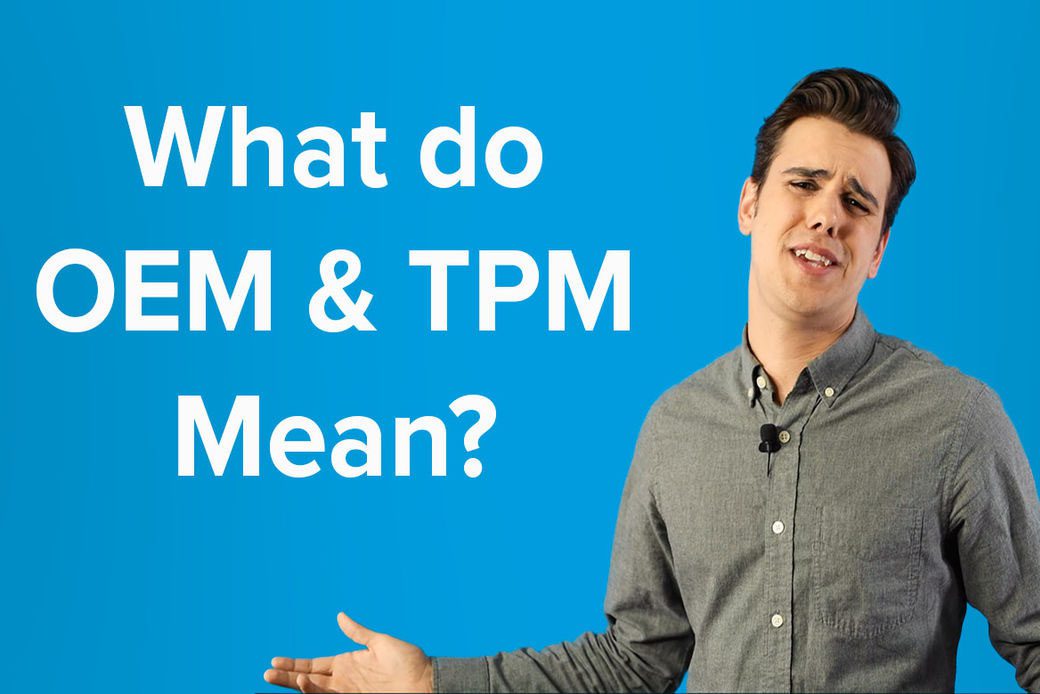Third Party Maintenance Acronym Glossary
TPM Acronym Glossary
If you are using a TPM provider for your HWMA instead of the OEM, it’s important to understand your SLA and whether it will be an MMC or an AMC, your SSL and FSL stocking locations and the FEs and SMEs that you will be working with.
Does this sentence give you a headache? Have no fear! We are here to define some commonly used acronyms in the third party maintenance space. Like many industries, third party maintenance has its own set of terms that are further complicated in that they have become shortened into acronyms. In no time you will be able to impress your friends as you throw around TPM jargon with ease. (Keep reading or jump to watch our humorous videos explaining the terms.)
What is TPM?
TPM is an acronym that stands for Third Party Maintenance. Third party maintenance is an option for hardware support and service offered through a provider separate from the original equipment manufacturer (OEM).
What does OEM mean?
OEM stands for Original Equipment Manufacturer. Because it is used across different industries, it can get a bit confusing at times. In the tech space, OEM can refer to either hardware or software manufacturers. Some examples of OEMs include Dell, IBM, and Cisco.
What does SLA mean?
SLA stands for Service Level Agreement. A service level agreement is an agreement of services in the form of a contract arranged between the TPM provider and the customer.
What is EOSL?
EOSL stands for End of Service Life. When we say hardware is EOSL, we mean that the manufacturer has stopped providing support options for the device. If you are not ready to refresh your equipment, third party maintenance providers can offer support for these devices.
What is an SME?
An SME is a Subject Matter Expert. A subject matter expert is an engineer that has significant training and experience and often specializes in a particular manufacturer.
What is an FE?
FE stands for Field Engineer. A field engineer is sent on-site to complete work. At M Global, our field engineers are managed through our helpdesk maintaining a consistently high level of service.
What do SSL and FSL mean?
SSL stands for Secure Stocking Location and FSL stands for Forward Stocking Location. These warehouse sites are located around the world and are used to store parts near a client’s particular location. This cuts down on the transit time for parts making them more readily available when they are needed.
What do MMC & AMC mean?
MMC stands for Monthly Maintenance Cost and AMC stands for Annual Maintenance Cost. Both of these are pretty self-explanatory. Monthly maintenance costs are defined on a monthly basis and annual maintenance costs are defined on a yearly basis.
What do HWMA & SWMA mean?
HWMA stands for Hardware Maintenance Agreement and SWMA stands for Software Maintenance Agreement. Sometimes the acronyms HMA & SMA are also used. A hardware maintenance contract is exactly what it sounds like—a contract for maintenance services for hardware (equipment and devices). And a software maintenance agreement is a contract for services for software.
What does MGS mean?
MGS stands for M Global Services. We are a third party maintenance provider and beyond providing exceptional hardware support, we are also committed to bringing transparency and honesty to the TPM space.
Now you can feel confident in your knowledge of third party maintenance acronyms and the next time someone asks about your HWMA or what SLAs your TPM provider offers, you will be able to answer with ease.
Contact M Global services to find out how TPM services can save you money over OEMs on your HWMA. And if you have any questions about our SLAs, FEs or SMEs, we’d be happy to talk with you!
Suggested Content
Get Started Now
We want you to consider us an extension of your team, a trusted resource and advisor. Call us today at 855-304-4600 to find out more.








